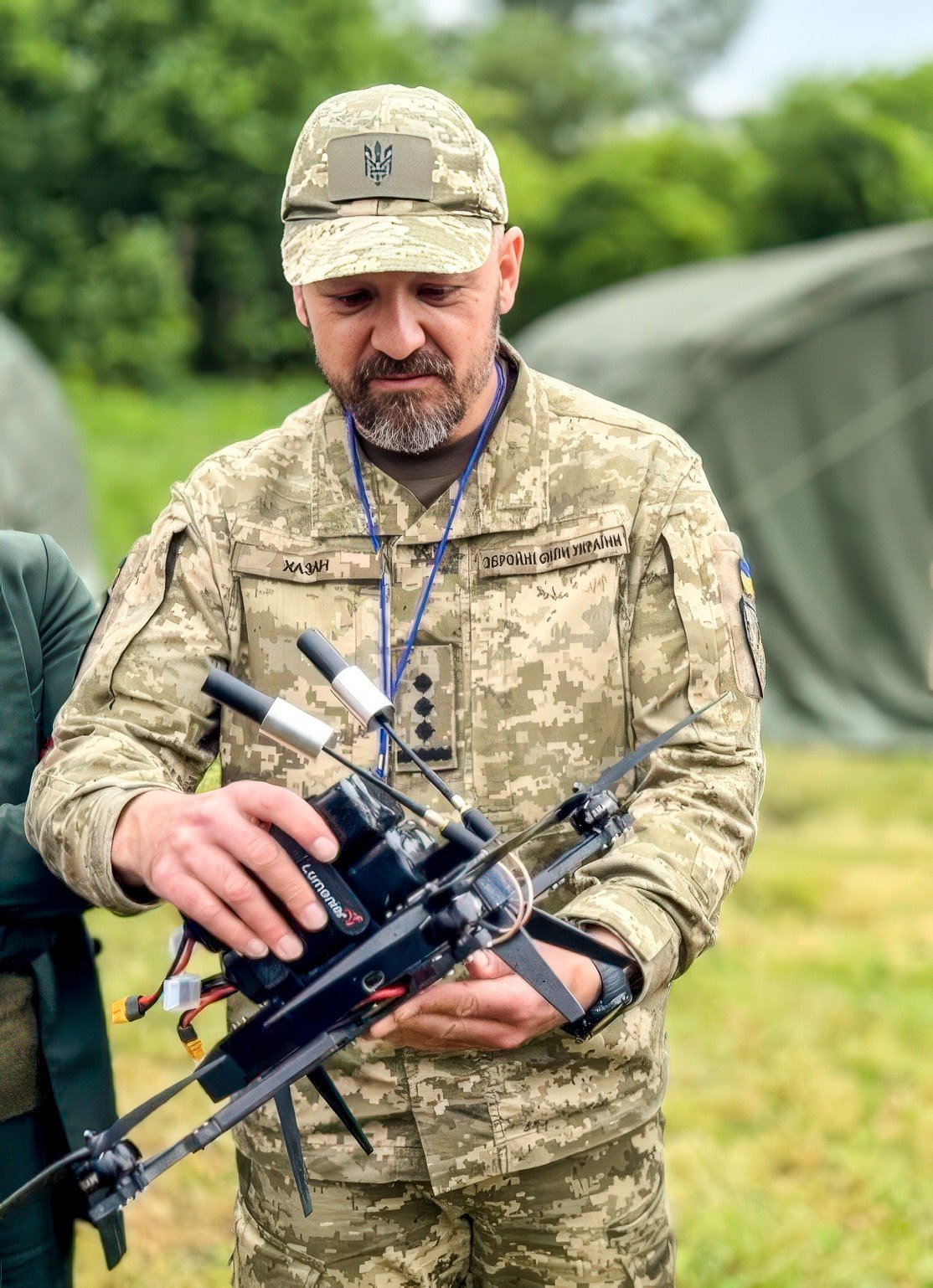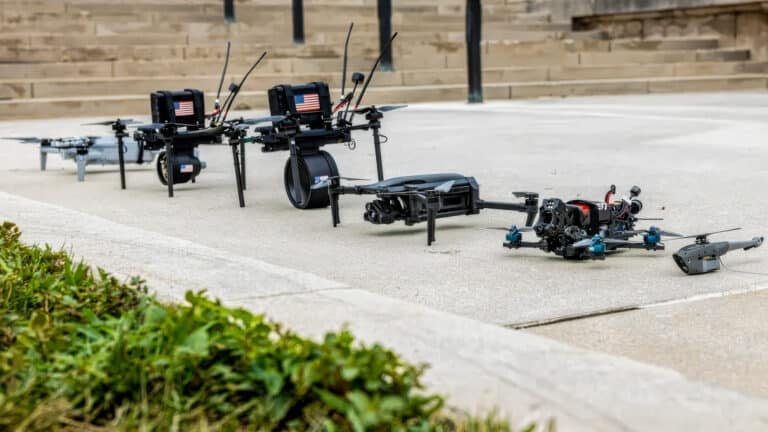Why Are $400 Ukrainian Drones Beating $100,000 American Switchblades?

Western military drones like the American Switchblade have proven too expensive and ineffective for Ukraine’s high-intensity battlefield, forcing a strategic shift to mass-produced FPV drones that cost a fraction of the price. The Economist reports that sophisticated Western systems costing tens of thousands of dollars are being outperformed by Ukrainian-made drones assembled for as little as $400.
The revelation challenges fundamental assumptions in Western defense procurement and exposes critical vulnerabilities in expensive military technology when faced with peer-level electronic warfare capabilities.
Russian Electronic Warfare Cripples Western Systems
The primary weakness plaguing Western drones in Ukraine is their vulnerability to Russian electronic warfare systems deployed along the front lines. The Switchblade 300, which costs $60,000-$80,000 per unit, and the Switchblade 600, priced at $100,000-$175,000, have both struggled against sophisticated jamming and GPS spoofing.
Yuriy Borovyk, a Ukrainian drone developer, described how Switchblades glitched under Russian jamming and delivered minimal damage. In one test, a Switchblade strike merely cracked a bus window rather than shattering it, demonstrating limited kinetic effectiveness even when the drone managed to reach its target.
According to the Royal United Services Institute, Ukraine loses approximately 10,000 drones per month, with the vast majority of losses attributed to electronic warfare rather than physical countermeasures. Russian forces use early warning radars to detect incoming drones, then deploy electronic warfare systems to jam communications and spoof GPS signals, causing drones to crash or fly off course until their batteries die.
Cost-Effectiveness Drives Ukraine’s FPV Revolution
The economics of drone warfare in Ukraine tell a stark story. While the United States supplied over 700 Switchblade systems starting in March 2022, Ukrainian forces have increasingly turned to domestically produced first-person-view (FPV) drones that cost 150 to 200 times less than their Western counterparts.
Ukrainian FPV drones, which can be assembled in basement workshops for $400-$700, have proven devastatingly effective against high-value Russian assets. According to our recent reporting, Ukraine now deploys approximately 9,000 drones daily against Russian forces, with FPV drones accounting for 60-80% of Russian equipment losses.
One Ukrainian military analyst calculated that using an FPV drone to eliminate an infantry target costs nearly seven times less than employing a Switchblade 300. When targeting armored vehicles, cheap FPV drones carrying grenades or improvised explosives can destroy tanks worth millions of dollars.
Mass Production Replaces Precision Engineering
Ukraine’s domestic drone industry has scaled to produce over 4 million drones annually, with plans to reach 4.6 million units in 2025. This mass production approach stands in sharp contrast to Western defense procurement, which prioritizes sophisticated features like encrypted communications, autonomous target identification, and extended range.
“In the beginning, I was delivering food and medicine to people in Kyiv, anything to help,” former barista Andrii Yukhno told NPR. “But then I moved on to bigger and bigger things.” Yukhno now oversees a covert drone workshop producing 100 FPV drones monthly from a basement apartment.
The shift reflects a fundamental change in warfare doctrine. In high-intensity peer conflict with pervasive electronic warfare, disposability matters more than sophistication. Ukrainian manufacturers like Vyriy have achieved 100% domestic component sourcing, eliminating dependence on foreign supply chains vulnerable to disruption.
Western Defense Industry Responds Slowly
AeroVironment, maker of the Switchblade, has acknowledged the electronic warfare challenges and introduced updated variants at the recent AUSA 2025 conference. The new Switchblade 600 Block 2 and Switchblade 400 incorporate improved anti-jamming capabilities and modular electronics designed for contested environments.
“We talk about things like electronic warfare, we talk about friendly jamming, enemy jamming and how to defeat that jamming,” Austin Johnson, AeroVironment’s senior director, told reporters. “All those lessons learned got pushed into our Switchblade 600, Block 2 and our Switchblade 400.”
However, these improvements come years after Ukraine identified the problems. The U.S. Army notably declined to purchase additional Switchblade 300s in April 2023, reflecting doubts about the system’s cost-effectiveness in high-intensity conflict.
Specialized Roles for Western Systems
Western loitering munitions haven’t been completely abandoned. Ukrainian special forces, intelligence units, and counterintelligence still employ Switchblades for specialized missions against high-value stationary targets like surveillance systems and electronic warfare equipment where precision matters more than cost.
The distinction highlights different operational philosophies. FPV drones excel at general-purpose attacks against dispersed targets—entrenched infantry, moving vehicles, and fortified positions. Switchblades offer superior precision in day and night conditions, easier operation, and better resistance to jamming than first-generation FPV systems, but these advantages don’t justify the 150:1 cost differential for most battlefield scenarios.
Ukrainian forces have adapted tactics accordingly, reserving expensive Western systems for surgical strikes while deploying FPV swarms for sustained attrition warfare.
DroneXL’s Take
We’ve been tracking this story since the United States first shipped 100 Switchblades to Ukraine in March 2022, when optimism ran high about Western technology tipping the battlefield balance. Three and a half years later, the data tells an uncomfortable truth for Western defense contractors: their counter-insurgency playbook doesn’t work in peer warfare.
The Ukraine conflict has exposed what happens when expensive Western drones—designed for permissive environments in Iraq and Afghanistan—meet sophisticated electronic warfare and mass-produced countermeasures. Russia’s investment in EW capabilities and Ukraine’s embrace of expendable systems have created a battlefield where a $400 quadcopter can be more strategically valuable than a $100,000 precision munition.
This isn’t just about Ukraine. NATO militaries watching this conflict must reconsider their entire approach to unmanned systems procurement. The future of drone warfare appears to favor mass over precision, adaptation over sophistication, and rapid innovation cycles over lengthy acquisition programs. Western defense industries built around high-cost, low-volume production may struggle to compete against adversaries willing to field thousands of “good enough” drones.
The bitter irony? Ukraine is now negotiating to manufacture Ukrainian-designed drones for potential export to American forces—a remarkable reversal where battlefield necessity has driven innovation cycles that have lapped Western procurement systems entirely.
What do you think? Share your thoughts in the comments below.
Discover more from DroneXL.co
Subscribe to get the latest posts sent to your email.
Check out our Classic Line of T-Shirts, Polos, Hoodies and more in our new store today!

MAKE YOUR VOICE HEARD
Proposed legislation threatens your ability to use drones for fun, work, and safety. The Drone Advocacy Alliance is fighting to ensure your voice is heard in these critical policy discussions.Join us and tell your elected officials to protect your right to fly.
Get your Part 107 Certificate
Pass the Part 107 test and take to the skies with the Pilot Institute. We have helped thousands of people become airplane and commercial drone pilots. Our courses are designed by industry experts to help you pass FAA tests and achieve your dreams.

Copyright © DroneXL.co 2025. All rights reserved. The content, images, and intellectual property on this website are protected by copyright law. Reproduction or distribution of any material without prior written permission from DroneXL.co is strictly prohibited. For permissions and inquiries, please contact us first. DroneXL.co is a proud partner of the Drone Advocacy Alliance. Be sure to check out DroneXL's sister site, EVXL.co, for all the latest news on electric vehicles.
FTC: DroneXL.co is an Amazon Associate and uses affiliate links that can generate income from qualifying purchases. We do not sell, share, rent out, or spam your email.


















